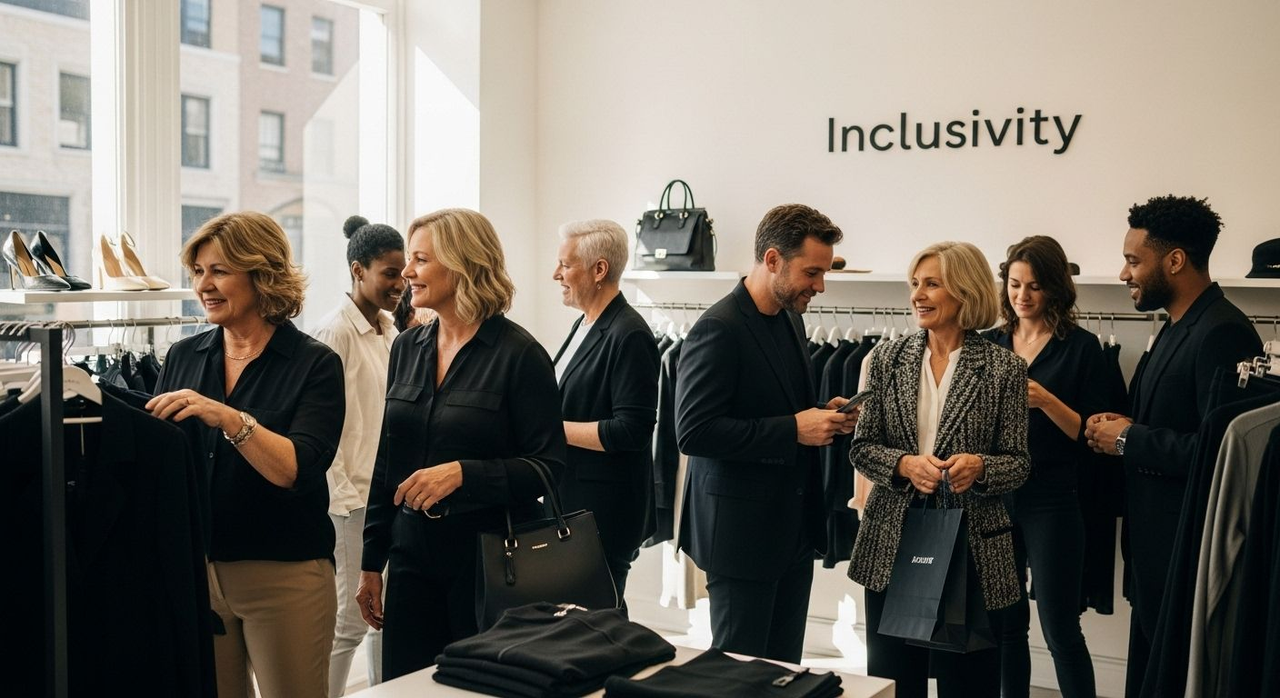Understanding Inclusivity in Fashion Industry Concepts
Understanding Inclusivity in Fashion Industry Concepts
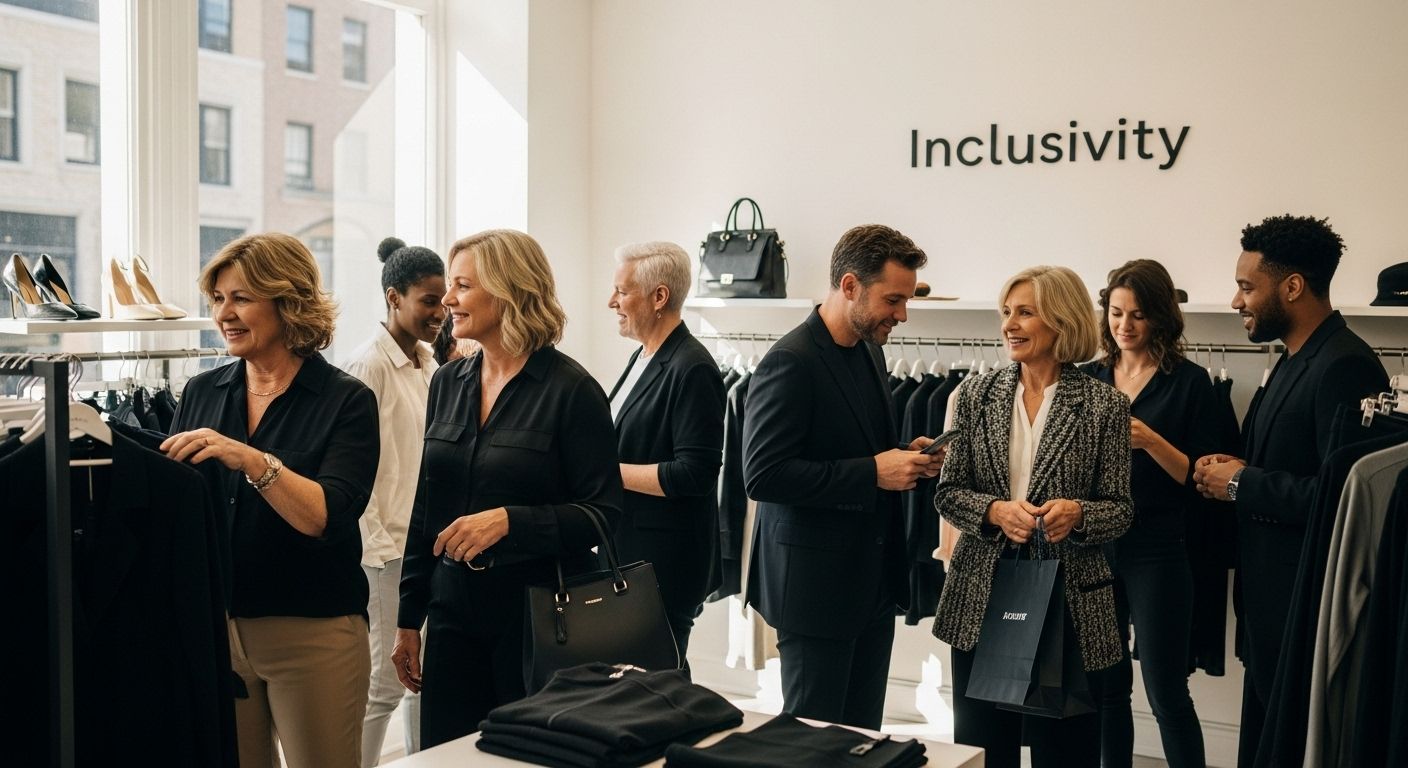
Inclusivity in fashion is shaking up everything we thought we knew about style and self-expression. Forget the old days when runways showed just one narrow view of beauty. Now brands are listening because brands that embrace diversity attract much wider consumer bases. It turns out the real revolution is in how much this shift empowers every single person to feel truly seen.
Table of Contents
- What Is Inclusivity In The Fashion Industry?
- Why Inclusivity Matters In Fashion Choices
- How Inclusivity Is Reshaping Fashion Brands
- Key Concepts Of Inclusivity In Fashion Design
- The Impact Of Inclusivity On Consumer Experience
Quick Summary
| Takeaway | Explanation |
|---|---|
| Inclusivity celebrates all identities in fashion | Fashion must represent diverse body types, ethnicities, ages, genders, and abilities to foster belonging. |
| Authentic representation builds consumer loyalty | Brands that genuinely embrace diversity positively influence consumer relationships and encourage repeat purchases. |
| Universal design enhances market reach | Adopting inclusive design principles expands customer engagement by accommodating a broader range of needs. |
| Intersectionality deepens fashion experiences | Recognizing overlapping identities allows for meaningful, personalized fashion that respects individual uniqueness. |
| Psychological empowerment boosts self-expression | Inclusive choices in fashion validate personal identity, transforming shopping from stressful to celebratory. |
What is Inclusivity in the Fashion Industry?
Inclusivity in the fashion industry represents a transformative approach to designing, producing, and presenting clothing that respects and celebrates human diversity. Unlike traditional fashion models that catered to narrow aesthetic standards, this concept embraces representation across multiple dimensions of human experience.
Defining Comprehensive Representation
At its core, inclusivity in fashion means creating apparel and experiences that welcome all body types, abilities, ages, genders, and ethnic backgrounds.
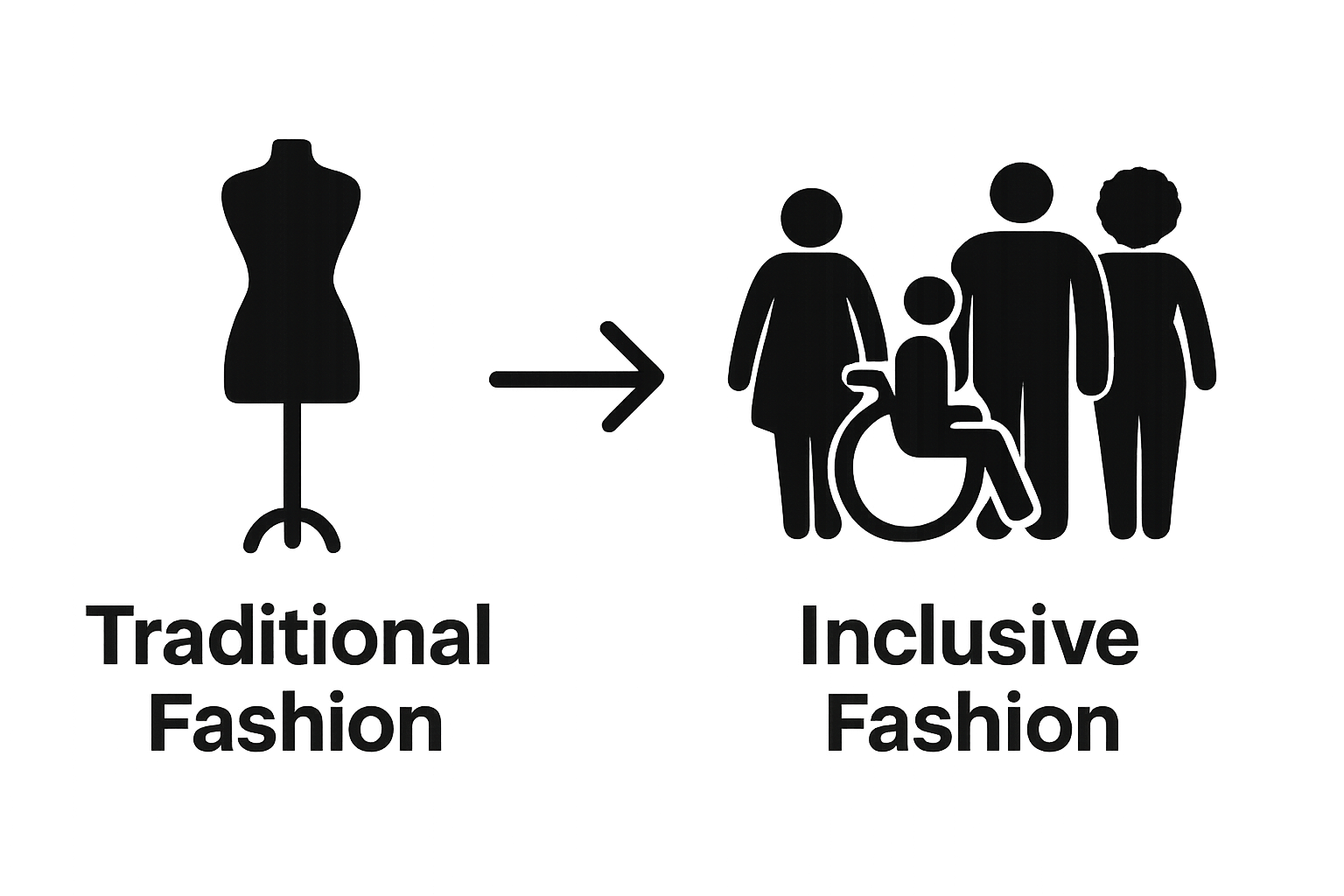 According to experts from The Conversation, this approach goes beyond surface representation and requires deep, systemic changes in how fashion organizations operate.
According to experts from The Conversation, this approach goes beyond surface representation and requires deep, systemic changes in how fashion organizations operate.
Key aspects of inclusivity include:
- Designing clothing for diverse body shapes and sizes
- Representing multiple ethnicities in marketing materials
- Creating adaptive clothing for individuals with disabilities
- Ensuring fair representation in leadership and design roles
Breaking Traditional Boundaries
Historically, fashion has maintained restrictive standards that marginalized many groups. Inclusivity challenges these norms by recognizing that style and beauty are not confined to a single demographic. Research from academic sources demonstrates that embracing diversity is not just a moral imperative but also a significant market opportunity.
By expanding design perspectives and representation, the fashion industry can create more meaningful connections with consumers, acknowledge individual uniqueness, and foster a sense of belonging. Truly inclusive fashion understands that every person deserves to feel confident, comfortable, and beautifully represented in what they wear.
Why Inclusivity Matters in Fashion Choices
Inclusivity in fashion extends far beyond aesthetic considerations. It represents a profound social movement that addresses deep-rooted psychological, economic, and cultural implications for consumers across diverse backgrounds.
Psychological Impact of Representation
Fashion choices are deeply personal expressions of identity. When individuals see themselves represented in clothing design and marketing, it significantly boosts self-confidence and emotional well-being. According to McKinsey research, consumers are increasingly making purchasing decisions based on brands that demonstrate genuine commitment to diversity and representation.
Key psychological benefits of inclusive fashion include:
- Enhancing personal dignity and self-worth
- Reducing feelings of marginalization
- Promoting positive body image
- Creating a sense of belonging in fashion spaces
Economic and Social Transformation
Inclusive fashion is not just a moral imperative but a significant economic opportunity. Brands that embrace diversity attract wider consumer bases and demonstrate social responsibility. Research from North Carolina State University highlights that universal design principles in clothing can dramatically expand market reach and customer engagement.
Moreover, inclusive fashion challenges systemic barriers by providing opportunities for designers, models, and professionals from historically underrepresented groups. It transforms fashion from a exclusive industry to an inclusive platform that celebrates human diversity in all its beautiful complexity.
How Inclusivity is Reshaping Fashion Brands
The landscape of fashion brands is undergoing a radical transformation, driven by the powerful momentum of inclusivity. This shift represents more than a temporary trend—it signals a fundamental reimagining of how fashion companies conceptualize design, marketing, and consumer engagement.
Redesigning Product Development
Inclusive design has become a critical strategy for forward-thinking fashion brands. Companies are moving beyond traditional sizing frameworks to create clothing that genuinely accommodates diverse body types, abilities, and personal expressions. Research from the Universal Design Institute demonstrates that brands adopting inclusive design principles experience significant market expansion and customer loyalty.
Key transformations in product development include:
- Expanding size ranges beyond traditional measurements
- Developing adaptive clothing for individuals with mobility challenges
- Creating gender-neutral clothing collections
- Implementing more flexible sizing technologies
Reimagining Brand Representation
Fashion brands are radically restructuring their visual narratives to reflect genuine diversity. This means moving beyond tokenistic representation to authentic, meaningful inclusion across marketing materials, runway shows, and leadership positions. Authentic representation now involves showcasing models from various ethnic backgrounds, body types, ages, and gender identities.
By embracing inclusivity, fashion brands are not just changing their aesthetic—they are challenging long-standing industry norms and creating more welcoming, respectful spaces for all consumers. This approach recognizes that diversity is not a marketing strategy, but a fundamental commitment to human dignity and creative expression.
Key Concepts of Inclusivity in Fashion Design
Inclusive fashion design transcends traditional aesthetic boundaries, representing a holistic approach that integrates human diversity into every stage of clothing creation. This philosophy challenges long-standing industry norms by prioritizing accessibility, representation, and individual expression.
Universal Design Principles
Universal design emerges as a foundational concept in inclusive fashion, focusing on creating clothing that serves the broadest possible range of human bodies and abilities. Research from the Design for All Foundation emphasizes that truly inclusive design considers variations in physical capabilities, cultural backgrounds, and personal identities from the initial conception stage.
Key universal design principles in fashion include:
- Equitable use across different body types
- Flexibility to accommodate multiple physical capabilities
- Simple and intuitive design approaches
- Perceptible information accessible to diverse users
Intersectional Representation
Intersectionality becomes crucial in understanding inclusive fashion design. This concept recognizes that individuals possess multiple, interconnected identity dimensions—such as race, gender, ability, and age—that collectively shape their fashion experiences. Designers must consider these complex, overlapping identities when creating clothing collections.
By embracing intersectional perspectives, fashion designers can move beyond surface-level diversity and create genuine, meaningful representations that celebrate the rich tapestry of human experience. Inclusive design is not about creating a one-size-fits-all solution, but about developing flexible, adaptive clothing that honors individual uniqueness and empowers personal expression.
Below is a summary table highlighting key principles and features of universal design and intersectional representation as they apply to inclusive fashion design.
| Concept | Key Principles/Features | Purpose in Inclusive Fashion |
|---|---|---|
| Universal Design | Equitable use, flexibility, intuitive approach, perceptible information | To create clothing accessible to the widest range of people |
| Intersectional Representation | Recognizing overlapping identities (race, gender, ability, age) | To provide meaningful, personalized representation |
| Adaptive Clothing | Functional garments for disabilities and varied abilities | To ensure everyone can comfortably wear and enjoy fashion |
| Expanded Sizing | Size ranges beyond traditional measurements | To accommodate diverse body shapes and promote inclusivity |
| Gender-Neutral Options | Clothing not confined to a specific gender expression | To support individual identity and broaden fashion choices |
The Impact of Inclusivity on Consumer Experience
Inclusivity transforms consumer experience from a transactional interaction to a deeply personal, empowering journey. Fashion brands that authentically embrace diversity create profound connections that extend far beyond traditional purchasing dynamics.
Emotional Resonance and Validation
Consumer belonging becomes a critical metric in understanding inclusivity’s impact. When individuals see themselves genuinely represented, it generates powerful emotional responses that transcend mere product selection. Research from Boston University highlights that inclusive marketing directly correlates with enhanced customer loyalty and brand perception.
Key emotional benefits for consumers include:
- Feeling validated and recognized
- Experiencing increased self-confidence
- Developing stronger brand connection
- Feeling respected as an individual
Psychological Empowerment Through Choice
Inclusive fashion fundamentally reshapes consumer interactions by providing expanded choices that acknowledge individual uniqueness. Consumer empowerment emerges when brands offer clothing solutions that reflect diverse body types, abilities, cultural backgrounds, and personal expressions.
This approach transforms shopping from a potentially stressful experience into a celebration of individual identity. By recognizing that no single body type or aesthetic represents universal beauty, inclusive brands create environments where consumers feel genuinely seen, understood, and valued.
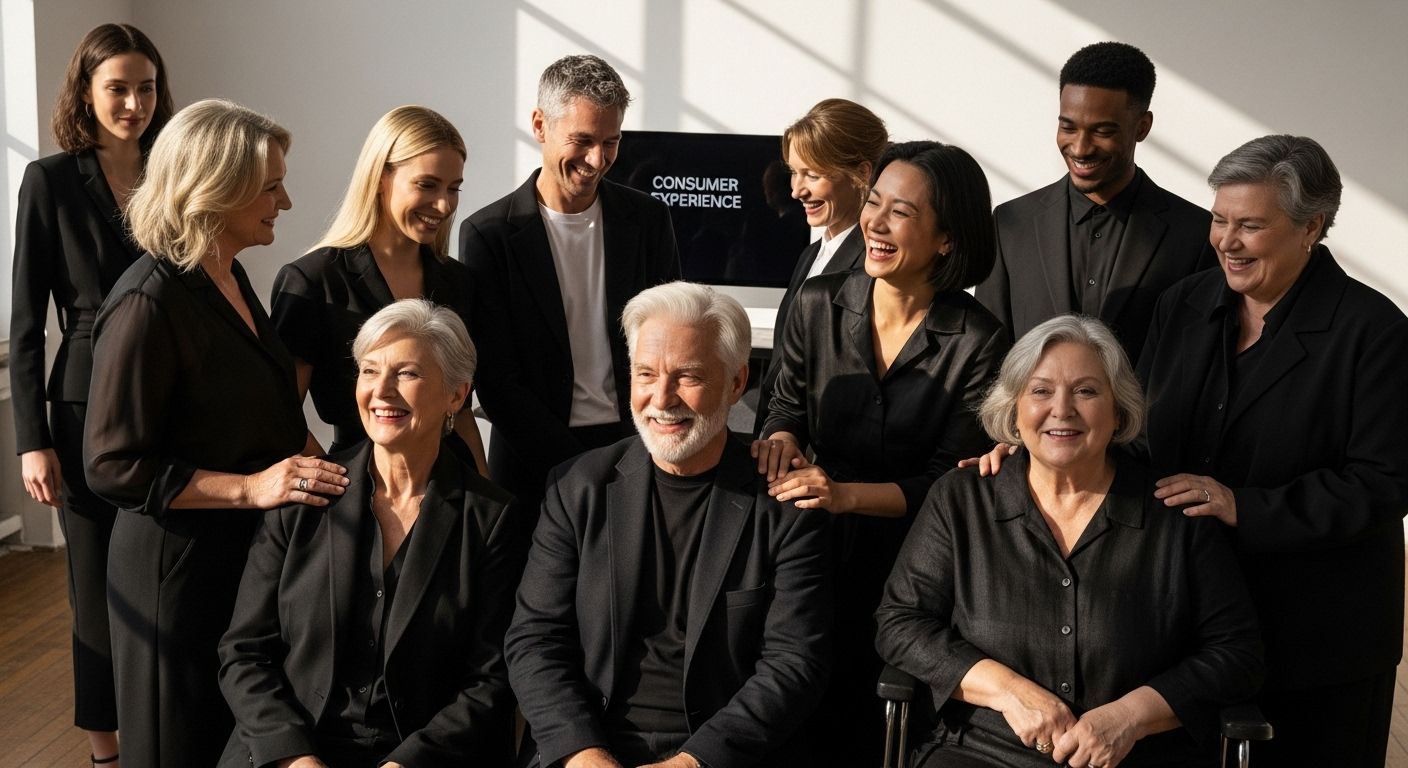
Your Perfect Dress Awaits: Celebrate Your Unique Style
The article explores how inclusivity in the fashion industry empowers every woman to see herself reflected in elegant attire, no matter her body type, background, or individuality. If you have ever felt overlooked by traditional formalwear collections or struggled to find a special occasion dress that truly feels made for you, Dress Me Up NY is ready to change your experience. Our curated selection of women’s formal dresses puts inclusivity and representation at the forefront, so every customer can find a look that boosts confidence and celebrates personal style.
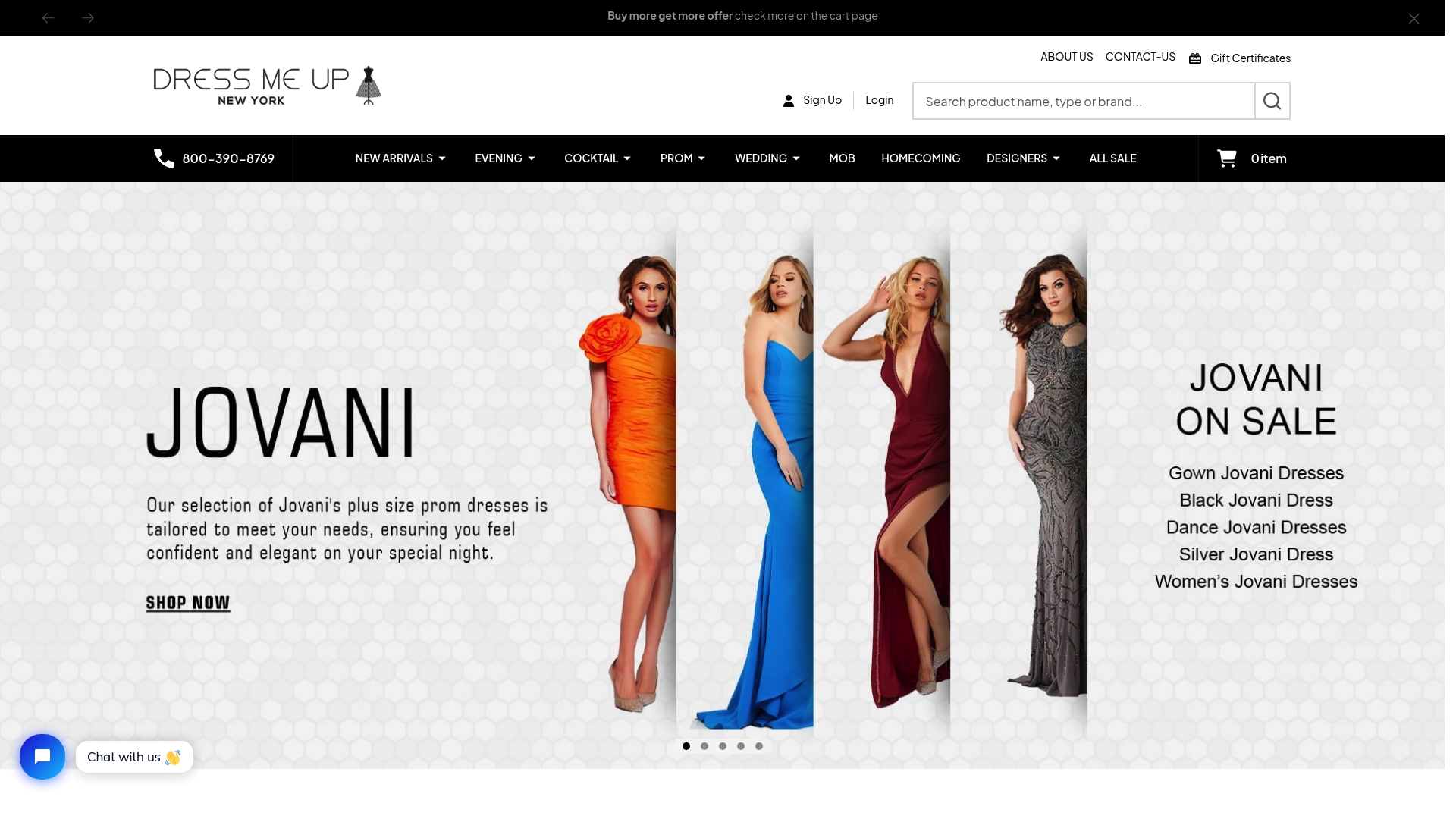
You do not have to settle for limited choices or styles that do not fit your identity. Discover the difference on Dress Me Up NY, where new arrivals and diverse collections ensure you feel beautiful for every event. Visit our store now to explore options that honor both tradition and transformation. Start shopping today and embrace a fashion experience as unique as you are.
Frequently Asked Questions
What does inclusivity in the fashion industry mean?
Inclusivity in the fashion industry refers to a commitment to creating designs that embrace diverse body types, abilities, ages, genders, and ethnic backgrounds, fostering a representative and respectful approach to fashion.
How does inclusive fashion affect consumer self-esteem?
Inclusive fashion boosts consumer self-esteem by providing representation in clothing design and marketing, which enhances personal dignity, promotes positive body image, and fosters a sense of belonging.
What are the key principles of universal design in fashion?
Universal design in fashion focuses on creating clothing that accommodates a wide range of human capabilities, including equitable use, flexibility, intuitive design, and accessibility for diverse users.
How can fashion brands authentically represent diversity?
Fashion brands can authentically represent diversity by embracing intersectionality, showcasing a variety of models across ethnicities, body types, ages, and genders, and involving diverse individuals in leadership and design roles.
Recommended
- Colette by Daphne CL2068 Tulle Beading Long Prom Dress
- Colette by Daphne CL5106 Stretch Spandex Jersey Dress
- Clarisse 2715 Lace Applique Sweetheart Neck Strapless Dress
- Terani Couture 1821C7015 Sleeveless Plunging V-neck Dress

